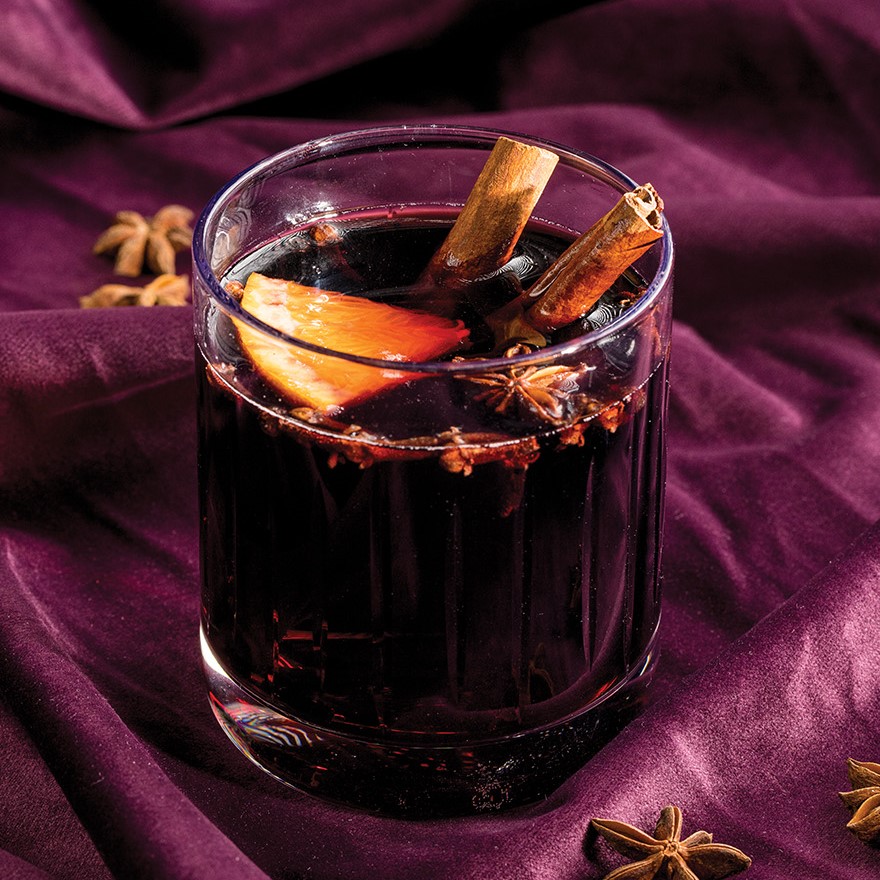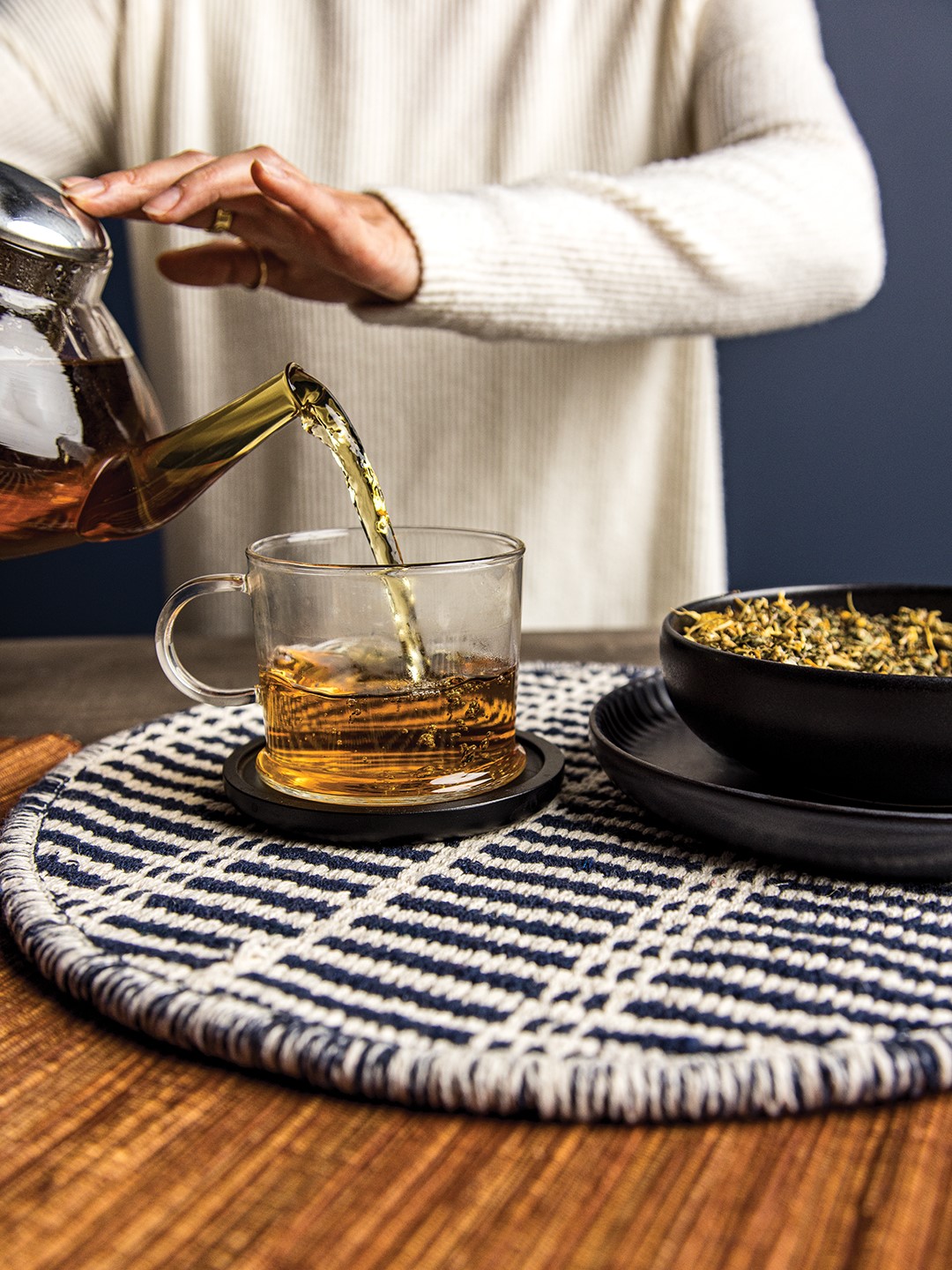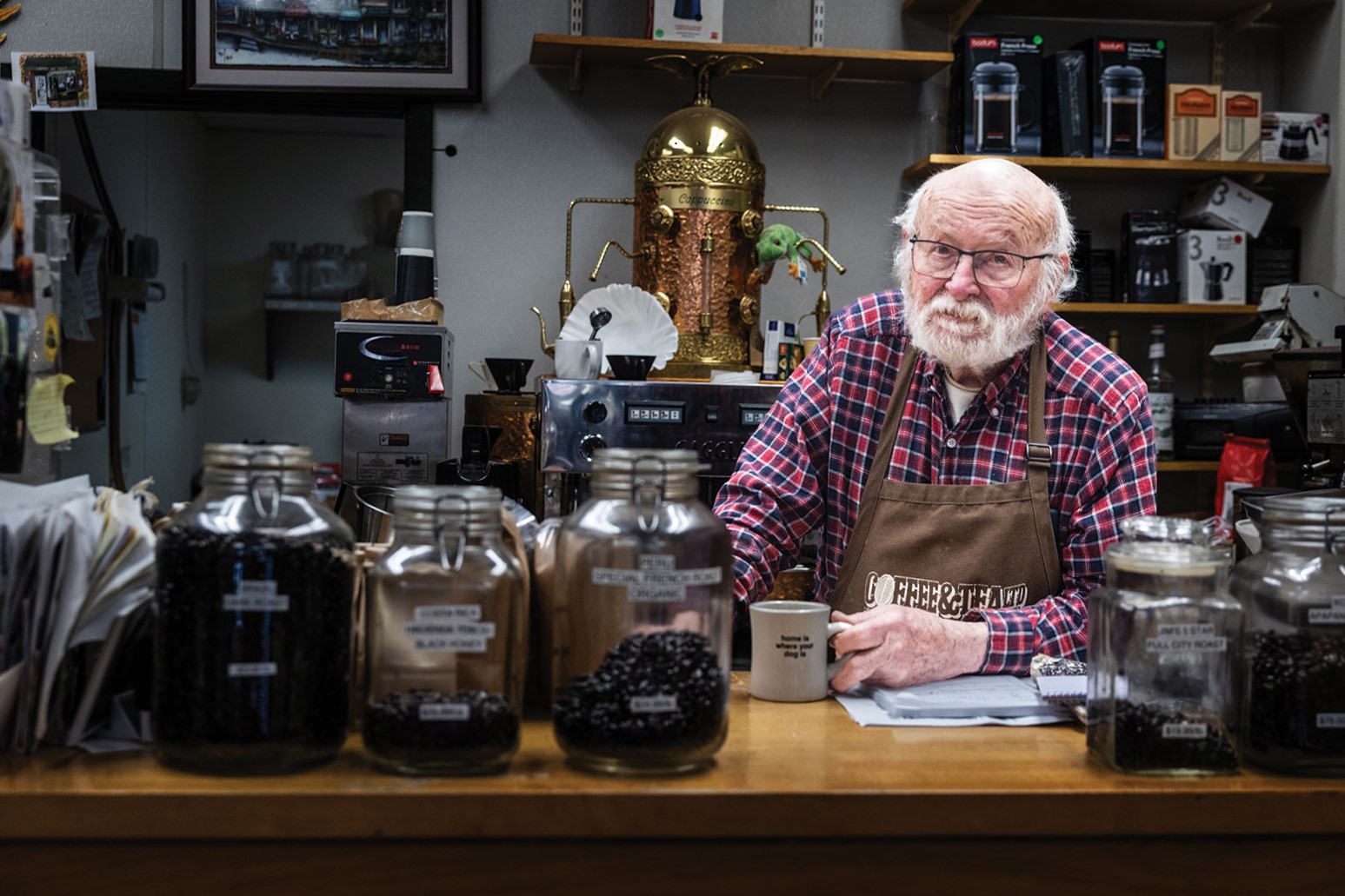
Photo: Chris Emeott
Get inspired by some of Minnesota’s roots this holiday season.
Minnesota has Scandinavian roots that run deeper than just our football mascot and our icy terrain. In fact, Minnesota has the largest Scandinavian population in the U.S. With these cultural roots, some American holidays are celebrated a bit differently by local families.
Want to join in on the fun? This holiday season, bring Scandinavia to your table. With the help of two local organizations, Norway House and the American Swedish Institute, you can cook up some Nordic-inspired Thanksgiving dishes ranging from gravlax to roasted turkey breast with lingonberries.
Minneapolis-based Norway House started when Norwegian-owned organizations began to pop up throughout Minnesota. Today, there’s more than 100 Norwegian organizations and businesses in Minnesota alone, and five Midwest Norwegian colleges. “Norway House was meant to be a convening place for all the Norwegian activity in the area,” says Ethan Bjelland, communications director at Norway House.
The folks at Norway House are experts on everything Norwegian, so bridging the gap between American and Norwegian culture comes quite easily, especially when it comes to delicious traditional Nordic food.
“The November month and Thanksgiving for Nordic families is really the process of getting prepared for Christmas,” Bjelland says with a smile. “In Scandinavia, Christmas is huge for us, so the food we make around Thanksgiving is the kickoff to the holiday season.”
For many people of Norwegian descent, that means making lefse. In the Norwegian-American community, lefse is not only a comfort food, but a staple. “It’s quite literally a mix of Minnesota and Norwegian cuisine,” Bjelland says. The way lefse is made and how it’s consumed differs from family to family. “We like to use this as a side or a dessert. Sometimes we put sugar or cinnamon on them to make them sweet,” Bjelland says. He notes that, in Norway, it is also common to wrap lefse around a hot dog to make a savory delight.
Lutefisk, a fish preserved in lye, is another classic and is served throughout Norwegian churches around the holidays—though it’s certainly not everyone’s cup of tea. Roasted turkey with lingonberry sauce is likely more of a crowd-pleaser and today is served more often
in Norwegian-American households.
“In Norway, we do not eat turkey often. So, this dish is the perfect mix of Norway and America,” Bjelland says. “We eat with a fork and a knife, and it is custom to pick up the meat with the fork and scoop with the knife. We scoop the sauce, potatoes and gravy onto the meat and have it as a full bite. Scandinavia really focuses on having a full, loaded bite. Nordic food gets the reputation that it’s bland, but if you think it’s bland, you’re just not eating it right.”
Norway’s neighbor, Sweden, has similar staple foods during the holidays. At the American Swedish Institute, food and handcraft programs coordinator Erin Swenson-Klatt, who works with Twin Cities and Swedish chefs, says comfort foods are a must for Thanksgiving.
“Our comfort foods during Thanksgiving are traditional [rosette] cookies, glögg [mulled wine] and pickled herring—but we really love our glögg,” Swenson-Klatt says.

Glögg (mulled wine).
A Scandinavian-Inspired Thanksgiving Day Menu
Contributed by the American Swedish Institute and Erin Swenson-Klatt
Appetizer: Juniper Cured Salmon (Gravlax)
Adapted from a recipe by Trine Hahnemann.
- 1 Tbsp. coriander seeds
- 1 Tbsp. black peppercorns
- 1 ¾ oz. juniper berries
- 5 ¼ oz. kosher salt
- 1 cup sugar
- 1 filet of salmon (about 3 lbs 8 oz.), skin on
- salted butter and rye crackers, to serve
Lightly crush the coriander and black peppercorns together in a mortar and pestle, then add to a mixing bowl. Separately, crush the juniper berries in the mortar and pestle. Add to the bowl along with the salt and sugar. Line a glass or ceramic dish generously with plastic wrap and place the salmon fillet skin down in the dish. Evenly spread the salt mixture over the salmon, making sure the flesh is completely covered. Wrap the filet tightly with the plastic wrap, which keeps the cure in place. Refrigerate for 2–3 days, turning about every 12 hours. When ready to eat, rinse the cure mixture off with cold water and wipe the fish clean. To serve, cut into very thin slices across the fillet, leaving the skin behind. Serve slices of gravlax on rye crackers with butter.
Side Dish: Roasted Potatoes with Mushrooms and Herbs
Serves 4
- 2 lbs. fingerling potatoes
- Olive or vegetable oil
- 1 Tbsp. dill
- 1 Tbsp. parsley
- 2 tsp. lemon zest
- Kosher salt and fresh black pepper
- 2 Tbsp. butter
- ½ lb. mixed wild mushrooms, halved (or quartered if large)
- A nutty hard cheese, shaved (e.g. parmesan, Västerbotten or Präst XO)
Preheat your oven to 450 degrees F, and toss your potatoes with 3 Tbsp. oil and ¼ tsp. kosher salt in a 9×13 pan. Arrange into a single layer and cover the entire pan with foil. Roast for 15 minutes. Carefully remove foil, shake pan well and continue roasting until potatoes are tender and browned, shaking occasionally. Test with a sharp knife to ensure they are done all the way through. Meanwhile, chop together the dill and parsley, then combine with lemon zest and ½ tsp. kosher salt in a small bowl and set aside. In a small skillet, melt 2 Tbsp. butter over medium high heat and add the mushrooms, seasoning with additional salt and pepper. You are looking for a nice sear and deep golden brown color. Transfer the potatoes and mushrooms to a serving bowl and toss with the dill and parsley mixture. Check seasonings, top with shaved cheese and serve warm.
Main Dish: Roast Turkey Breast with Lingonberries
Adapted from Cook’s Illustrated.
- 4 Tbsp. unsalted butter, softened
- ¾ tsp. table salt
- ¼ tsp. ground black pepper
- 1 tsp. fresh thyme
- 1 whole turkey breast (6–7 pounds), bone-in and skin-on, trimmed of excess fat and patted dry with paper towels
- 1 cup water
- Lingonberry preserves, to serve
- Optional, for natural turkey breast only: ½ cup table salt
If your turkey breast is kosher or self basting, skip to the next step. Dissolve ½ cup of table salt (or ¾ cup of kosher salt) in 4 quarts of cold water in a large container; submerge the turkey breast in brine, cover it with plastic wrap, and refrigerate it for three to six hours. (Do not brine the turkey breast any longer, or it will be too salty.) Rinse the turkey breast under cold water and dry it thoroughly with paper towels. Adjust oven rack to middle position and heat oven to 425 degrees F. Mix butter, ¾ tsp. salt, pepper and thyme in medium bowl with rubber spatula until thoroughly combined. Carefully separate turkey skin from meat over breast; avoid breaking skin. Work butter mixture under skin on both sides of breast and rub skin of turkey to evenly distribute butter over breast. Spray V-rack with nonstick cooking spray and set inside large roasting pan. Place turkey in rack with skin side facing up; pour water into roasting pan. Roast turkey for 30 minutes. Reduce oven temperature to 325 degrees F. Continue to roast turkey until thickest part of breast registers 160 degrees F on instant-read thermometer, about 1 hour longer. Transfer turkey to carving board and let rest for 20 minutes. Carve and serve with lingonberry jam on the side.
Dessert: An Assortment of Norwegian Cookies
Our editor, Amy Overgaard, asked her grandmother Sally Overgaard to share a few of her signature Norwegian cookie recipes which she makes every year during the holidays. Each of these recipes requires specific tools, which can be purchased online, or locally at Ingebretsen’s in Minneapolis.
Krumkake
Makes 24-30 cookies
- 1/2 cup butter
- 4 eggs
- 1 cup sugar
- 1 1/2 cup flour
- 1 tsp. almond extract
- 1 tsp. vanilla extract
Mix eggs and sugar, being careful not to over-mix. Add flour and stir to combine. Melt butter and add to mixture. Add almond and vanilla extracts, stirring to combine. Heat the krumkake iron over medium-to-medium-high heat and lightly grease both sides of the iron with cooking spray or butter. Spoon about a tablespoon of batter onto iron, close iron and gently squeeze handles together to spread the batter to the edges, quickly wiping up any overflow with a damp rag. Bake for 30 seconds, flip the iron over and bake for an additional 30 seconds. Flip iron back to its initial position, open and immediately roll the cookie around a krumkake cone. (Cookie should be a light golden brown.) Slide the cone out and allow the cookie to cool on a wire rack. Repeat until all batter is used.
Sandbakkel
Makes 24 cookies
- 1/2 cup butter
- 1/2 cup sugar
- 1/4 egg (1 Tbsp of well-beaten egg)
- 1/4 tsp. almond extract
- 1 cup + 2 Tbsp. flour
Cream butter and sugar. Add well-beaten egg and almond extract. Stir in flour. Mix until it becomes a firm dough. Form dough into balls and press into sandbakkel tins, using your thumb to press and spread the dough until it creates a thin layer in the entire tin. Bake at 325 degrees F until light golden brown, about 15 min. Cool for a few minutes before removing from tins. (If the cookies need some coaxing to come out of the mold, gently tap the edge of the mold on a countertop or loosen with a knife.) While traditionally this Norwegian sugar cookie is eaten plain, the tart-like shape means it can also be topped with berries or a dollop of jam or lingonberry preserves!
Rosettes
Makes 30-36 cookies
- 2 eggs, slightly beaten
- 2 tsp. sugar
- 1/4 tsp. salt
- 1 cup whole milk
- 1 cup sifted flour
- 1 Tbsp. lemon extract
- Bowl of granulated sugar
Heat a pot of oil to 350 degrees F. Meanwhile, beat the first four ingredients together with an egg beater. Add flour and lemon extract. (The batter may be a bit lumpy, but if you stir/whisk gently, the lumps will disappear.) Once oil is hot, place the rosette iron in oil to heat, about one minute, then remove from oil and dab off excess oil on a paper towel. Dip hot iron into batter, making sure the batter covers just to the top edge but doesn’t go over the top. Place the iron back in the oil and fry the batter until it’s golden brown. Use tongs to gently help release the rosette from the iron. Once the rosette is fried, place on a paper towel-lined plate to soak up excess oil. Finish by dipping in a bowl of granulated sugar to coat the cookie. Repeat until all batter is used.
A (Fun!) Vocab Lesson
Want to learn some Thanksgiving-inspired Norwegian vocab to share around the table? These Thanksgiving-related terms have been translated from English to Norwegian by Ethan Bjelland.
Feast – festmåltid (a festive meal); bankett (banquet)
Potato – Potet
Tradition – tradisjon
Pie – pai
Centerpiece – midtpunkt (lit. midpoint)
Turkey – kalkun
Harvest – Innhøsting
Serve – servere
Thankful/Grateful – takknemling
Home – hjem
Friends – venner
Gravy – saus (Norwegians generally just call them sauces and refer to the color of them – brunsaus/brown-sauce, hvitsaus/white-sauce, etc.)
Cranberry – tranebær
Pumpkin – gresskar
“The Norwegian language doesn’t generally require a lot of formality around table etiquette. The words for ‘please’ and ‘you’re welcome’ are used more sparsely than in English-speaking countries. But boy, oh boy, do we use the word ‘Takk,’” Bjelland says, noting that Takk translates to “thank you.”
Tusen takk – A thousand thanks; thanks a lot
Takk for maten – Thanks for the food; recognizing both the cook and the time we share around the table
Takk for innsatsen – Thanks for the effort; good work
Takk for nå – Thanks for now; it was great to have had this time together
takk for laget – Thanks for the company
Takk for meg – Thanks for me; that’s all I have to say; used when finishing a speech
Takk for sist – Thank you for last time; used when seeing someone again, as to begin the conversation where you left off


























